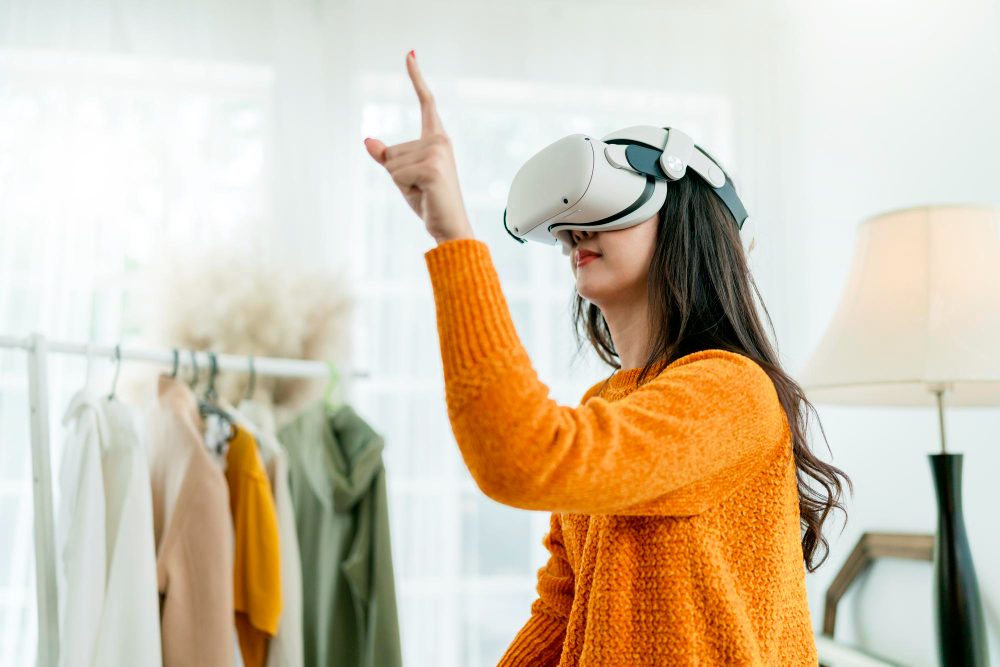You’d be surprised at how far we’ve made it. Over the last decade, technology has evolved so much that you are not only limited to your phone but also other tech devices which makes your life easy.
As wearable technology and healthcare applications get more sophisticated, the world of technology is reaching new heights.
In this wearable technology article, we will understand what it is and shed light on the latest ongoing tech which will make our lives easy.
Wearable technology: What is it?
Any electronic gadget that is worn, collects data or allows data sharing over the internet is considered wearable technology. These cutting-edge products include smartwatches, fitness trackers, augmented reality glasses, and medical equipment. These devices give you a revolutionary new method to access data and communicate with other devices when connected to your laptop or smartphone.
Advantages of Wearable technology
Wearable technology has evolved to new heights in recent years and it definitely won’t stop due to its potential to increase productivity and wellness. It aids activity tracking, quickens processing, improves patient care, and benefits healthcare practitioners. Additionally, wearable technology motivates people to control their health, enabling them to play an active role in their well-being.
Different Wearables
There are many types of wearable tech in all shapes and sizes. From basic fitness trackers to advanced smartwatches. From augmented reality glasses to different medical devices, you can choose from a range of what the market has to offer.
A fitness tracker acts like a mini health coach which will update you on your fitness journey on the other hand a smart watch acts as a personal assistant tied around your wrist to manage your day-to-day work.
Wearing augmented reality glasses adds a second layer of digital data to the real environment. Whereas medical equipment provides doctors with crucial patient data.
Top Wearable Technology of 2023 to look out for
Apple Vision Pro
With cutting-edge capabilities like gesture controls, dual twin 4K microLED virtual reality panels, and more, Apple unveiled Vision Pro during the WWDC 2023 event.
It is a mixed reality headgear that shows immersive, totally virtual material while overlaying augmented reality content on the environment around you.
Withings ScanWatch
ScanWatch is the first hybrid smartwatch that continuously scans key metrics to identify issues affecting heart health and assist users become more physically active.
Garmin Fenix 7
The Fenix 7 is a multisport GPS watch featuring wrist-based heart rate, Pulse Ox, VO2 Max, and other performance-enhancing features.
Smart Rings
Like smartwatches, the best smart rings come equipped with a full complement of health and sleep-tracking functions. They adopt a more subdued, less intrusive attitude, especially prior to summertime sports and social events. Even non-health NFC capabilities like contactless payments and virtual business cards are available in some configurations.
Body Mounted Sensors
For preventative measures in many areas of medicine, including cardiopulmonary, vascular, endocrine, neurological function, and rehabilitation therapy, smart wearable sensors are reliable and useful. The accuracy and utility of these sensors have also been demonstrated in the fields of rehabilitation medicine and perioperative monitoring.
AI hearing aids
Hearing aids powered by artificial intelligence (AI) can automatically adjust to the user’s environment and hearing needs while filtering out undesired noises. These gadgets, often known as hearables, might include features like translation, audio streaming, and fitness tracking.
Conclusion
The Wearable technology trends will keep evolving and continue to expand the possibilities of how we see the world. So far, wearable tech has proven beneficial to both the service provided as well as the service receiver. It would be interesting to see what the next decade of wearable technology has to offer.



